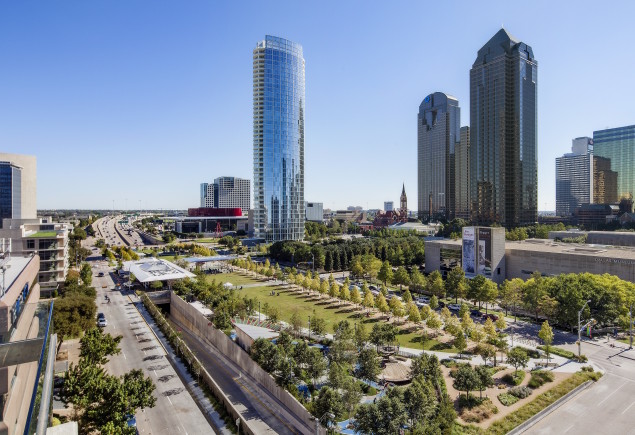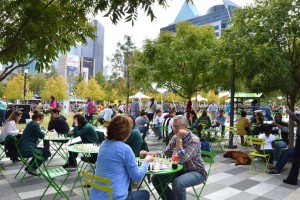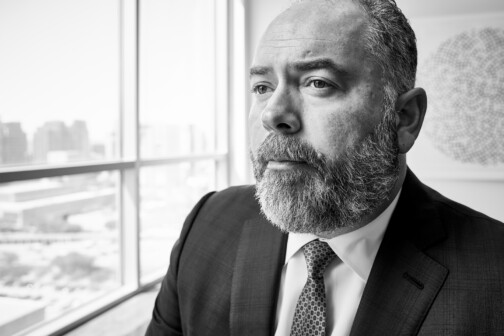
In their formative years, cities make strategic decisions that, over time, determine the trajectory of future growth. Occasionally, as with Haussmann’s carving up of Paris for the great Boulevard project in the 1850s, the disruption and residual damages are obvious from the beginning. In other instances, civic projects unveil their unintended consequences in a gradual escalation over time; the unforeseen effects occasionally taking on a weight equal to the problem that they were intended to alleviate.
It is frequently the case that how a city addresses these residual consequences, in large measure, defines both its character and its future. There is rarely a time when a city does not face more pressing needs, but we would do well to learn from history. While 50- and 100-year civic projects almost inevitably serve as catalysts, driving the city’s failure or successes, it is the boldness of a city’s counter-moves, intended to correct those early mistakes, that is one of the markers of a great city. Think, for example, of the Big Dig in Boston (1992), the Embarcadero Freeway in San Francisco (1989), or the High Line in New York (2008).

Our own Klyde Warren Park is another example. Five years ago, where the park sits now, commuters and residents encountered the Woodall Rogers Freeway, an unsightly canyon of a highway that marred the urban core. The successful public-private partnership responsible for the construction of Klyde Warren Park remedied the nearly impassable rupture between downtown and Uptown, successfully uniting two parts of the city with a park that is now a vibrant destination in its own right.
Is Klyde Warren Park the first of many similar civic counter-moves? Or will it be our crowning moment, leaving other similar opportunities un-attended? It will come as no surprise to many of you that several critically important large civic projects are currently screaming to be addressed, each presenting a chance to repair, regenerate, and redefine who we are, and who we may become as a city.
Two of them, in particular, stand out.
First, the Trinity River, its levees and the corridor they were built to fortify. The levees were constructed in the 1930s to protect a young city from re-occurring flooding, which would have undoubtedly stalled industrious early Dallasites who were here to build a city that would be unlike the ones they left. The unintended consequences of the levees, however, remain all too apparent almost a century after their completion. While the levee walls kept the infrequent but radically damaging floodwaters in, they created additional barriers, physical and otherwise, that we’ve since struggled to overcome.
The Trinity River Project promises to transform a barren chasm and the earthen walls which surround it into a great urban park as well as a much-needed vehicular thoroughfare, providing one of the country’s address the massive population we will undoubtedly see in the next decade.
The Eisenhower highway program of the late 40s and early 50s is another massive civic infrastructure project whose deleterious consequences continue to ripple four decades later.
The 1950s highway program helped usher in the age of the new American mythology, extolling the virtues of the suburban two-car home. The project’s completion also announced Dallas as the unarguable crosshair of American transportation, between both the Atlantic and the Pacific (I-20 and I-30) and between Mexico and Canada (I-35). Unfortunately, it also left us with a regrettable set of submerged highways, I-30 and Woodall Rogers Freeway, and the elevated I-345 Freeway; concrete barriers that have proven to be no less profound than the earthen berms of the Trinity River at disconnecting the city in egregious ways.
The barriers, which began as physical divides, have over time morphed into much greater divides, with wide-reaching social and environmental consequences we must face.
Whether one follows the driving constructs of New Urbanism, transforming I-345 into a street level boulevard, or instead converting it into a transportation-driven tunnel, there is a solution that will both address Dallas’ transportation needs at the same time as it heals the barrier the crumbling I-345 represents.

It is not beyond expectation to believe that Dallas has the ability to remedy the unintended consequences of earlier decisions, and the ability to collectively re-imagine and redevelop these pieces of infrastructure into hallmark civic trophies.
I hope we continue to applaud ourselves for our success with Klyde Warren Park—until we are in such a lather we go and do it again. Whether it is the removal and restructuring of the I-345 connector, which so devastatingly destroyed a thriving neighborhood and the Good Latimer business district, the next Calatrava bridge spanning the Trinity or, perhaps most important, the development of the Trinity into the largest urban city park of any city in the United States alongside the development of a new I-35/Trinity Toll road.
Each of these projects would not only assist us in the complex and required balance between our current and future transportation needs, but would richly contribute to the beautification and green-space of our city. Each is different and yet each, in many ways, is the same; judicious, far-sighted efforts to convert the unintended consequences of early city growth into hallmarks of who we are and who we are to become.
Note: This is part 1 of a three-part series. Click here to read part 2. Click here to read part 3.
Michael Ablon is principal of PegasusAblon, a commercial real estate development, investment and management company. Contact him at [email protected].





